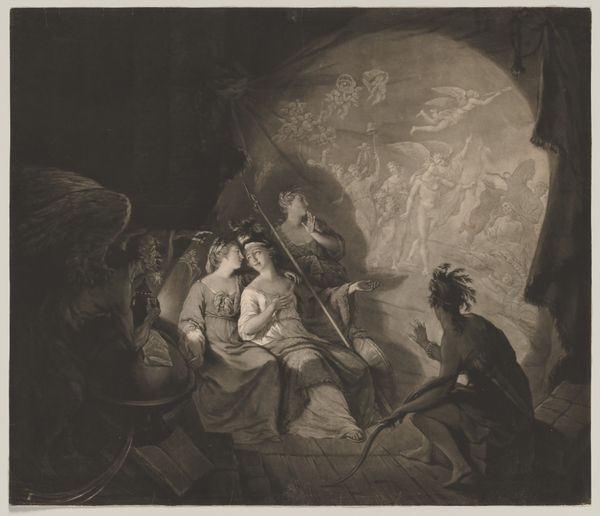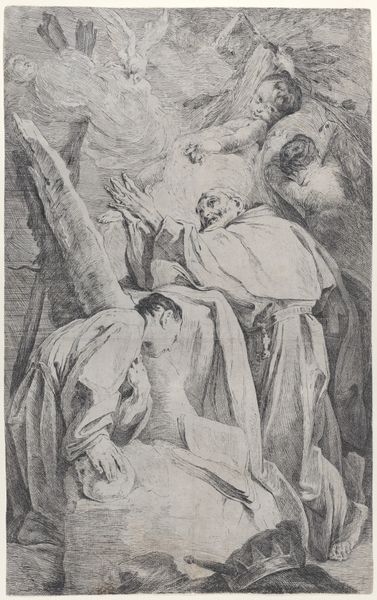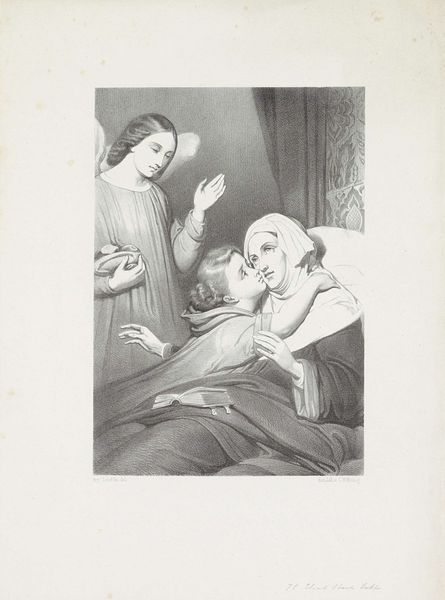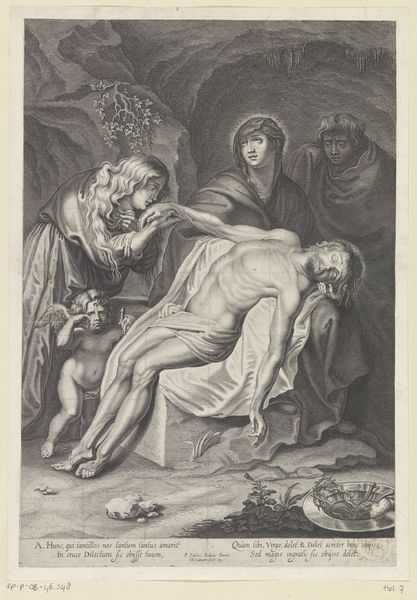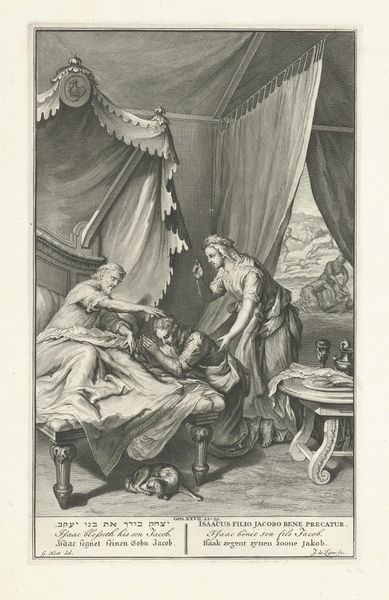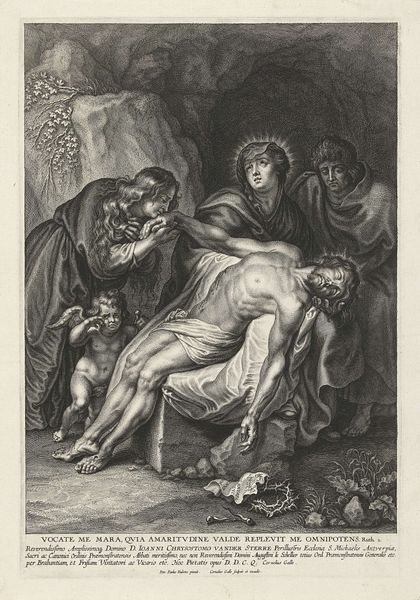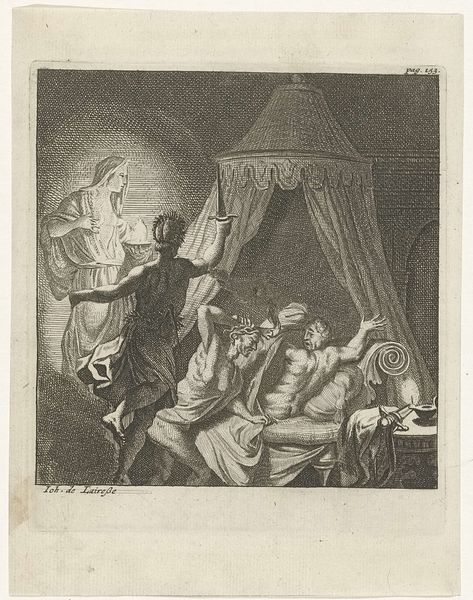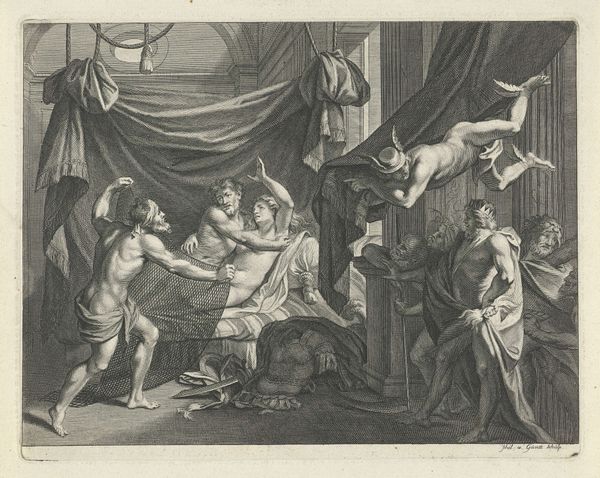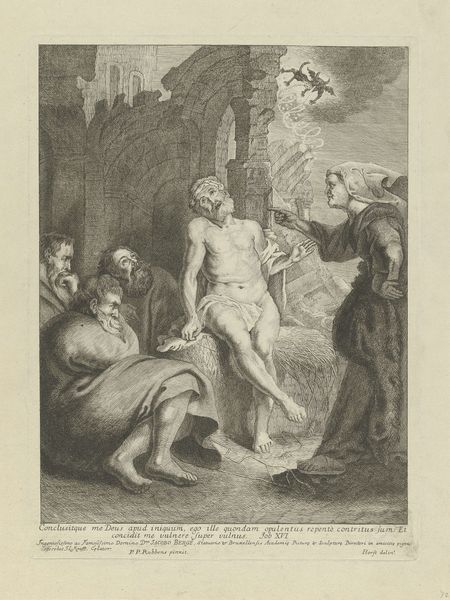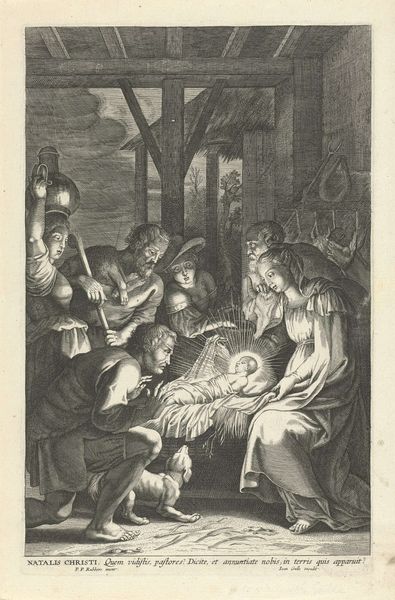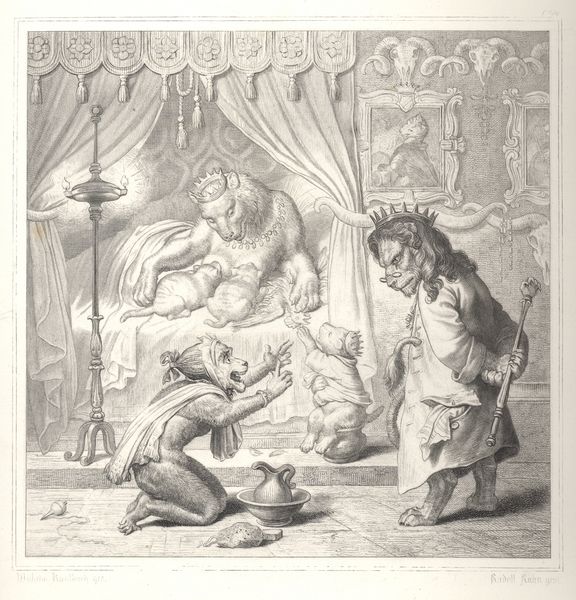
Rome, Titus's Garden–Lucius Pursued by Lavinia (Shakespeare, Titus Andronicus, Act 4, Scene 1) 1793 - 1852
0:00
0:00
drawing, print
#
portrait
#
drawing
#
allegory
#
narrative-art
# print
#
figuration
#
romanticism
#
history-painting
Dimensions: Image: 19 15/16 x 14 1/2 in. (50.6 x 36.9 cm) Plate: 22 1/4 × 16 1/16 in. (56.5 × 40.8 cm) Sheet: 27 13/16 × 21 15/16 in. (70.7 × 55.7 cm)
Copyright: Public Domain
Editor: This is "Rome, Titus's Garden – Lucius Pursued by Lavinia," based on Shakespeare's Titus Andronicus, Act 4, Scene 1. It’s a print made sometime between 1793 and 1852 by Thomas Kirk, currently residing here at the Met. I am immediately struck by the dramatic intensity frozen in this grayscale tableau. What do you make of it? Curator: Drama indeed! I see a swirling tempest of emotions captured in lines and shadows. It feels almost… theatrical, doesn't it? Consider the Romantic fascination with heightened emotion, particularly scenes plucked straight from literary canons. Kirk here translates Shakespearean tragedy into visual melodrama. It makes me wonder, how successful is it? Does it make you *feel* the play, even without knowing the context? Editor: I get a sense of distress, certainly, and the pursuit creates a definite tension. I guess the lack of color keeps it at a remove, more like a stage play viewed from afar? Curator: Ah, exactly! The absence of colour forces us to focus on form and gesture. Lavinia’s billowing gown becomes almost a wing, suggesting both flight and entrapment. Consider too the rigid backdrop of classical architecture. It suggests that individual struggle, passion, always play out against established powers or structures. Do you get that feeling too? Editor: Yes, definitely, there’s something timeless about the architecture which definitely hints at enduring social structures which magnify, rather than mitigate individual trauma. The way the figures interact, how Kirk used shading to convey such complex feeling in static form, gives the architecture a particularly poignant tone. Curator: It's a haunting piece. Kirk distilled a potent dose of Shakespearian angst into a neoclassical setting. It begs to ask about performance, and reception, both then, and even for us today. Editor: So many levels, it's fascinating! Curator: It truly is. Something new every time.
Comments
No comments
Be the first to comment and join the conversation on the ultimate creative platform.
